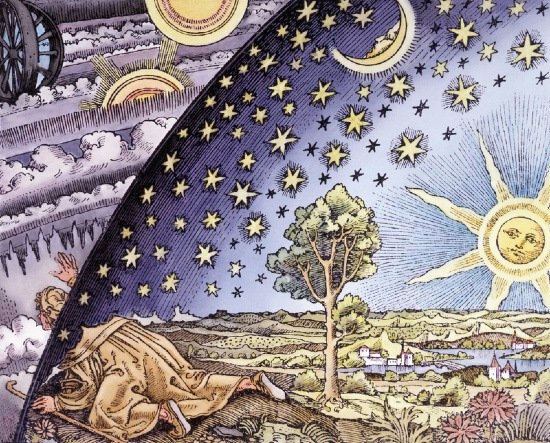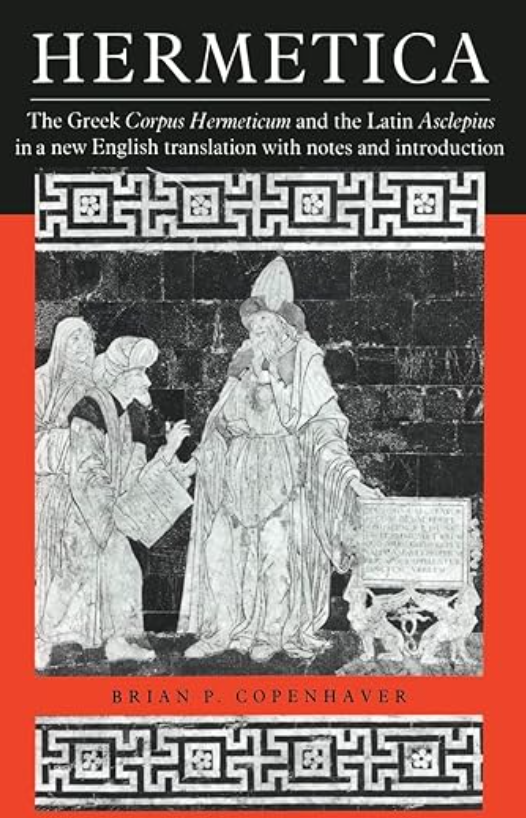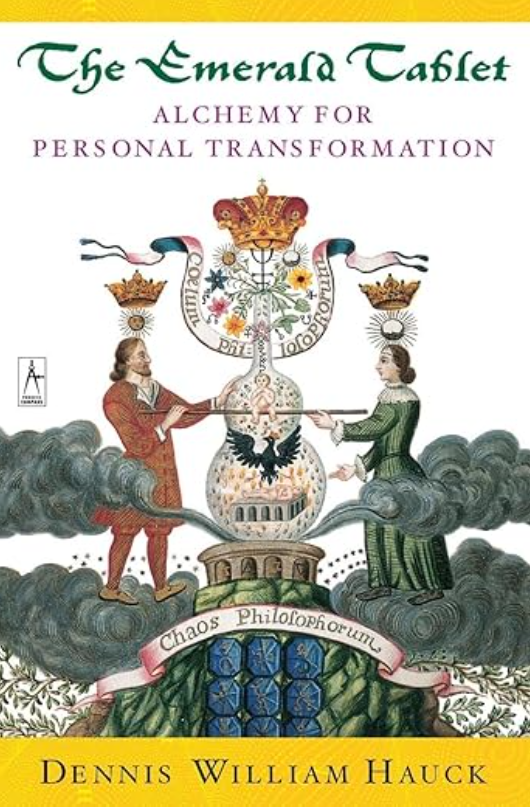
Hermeticism FAQs
Hermeticism vs Christian Mysticism?
Discover The Similarities and Differences Between These Two Paths
Hermeticism and Christian Mysticism are both rooted in the longing to unite with the Divine—but they express this longing through different languages, symbols, and spiritual practices. One is esoteric and universalist, born of ancient Egypt and Greece. The other is contemplative and Christ-centered, arising from the mystical heart of Christian tradition. Both offer profound tools for self-realization and surrender, and both illuminate the soul’s journey toward inner truth.
-
Originates in ancient Egypt and Hellenistic Greece
Expressed through texts like the Corpus Hermeticum and The Kybalion
Teaches that the universe is mental, symbolic, and governed by universal laws
-
Rooted in early and medieval Christianity, especially in monastic and contemplative orders
Emphasized by mystics such as St. Teresa of Ávila, Meister Eckhart, St. John of the Cross, Julian of Norwich
Focuses on union with God through love, surrender, and contemplative prayer
Historical Context of Hermeticism and Christian Mysticism
Though they may appear worlds apart—Hermeticism cloaked in esoteric symbolism and Christian Mysticism steeped in devotional theology—these two traditions emerged from intersecting streams of spiritual thought in the ancient and medieval world.
A Shared Hellenistic Foundation
Hermeticism emerged in Alexandria during the early centuries of the Common Era—a time and place where Egyptian priesthood, Greek philosophy, Jewish mysticism, and early Christian theology coexisted. The Corpus Hermeticum, one of Hermeticism’s core texts, shares remarkable affinities with the Neoplatonic philosophy of Plotinus and his successors: the soul’s fall into matter, the return to the divine through inner purification, and the metaphor of ascent toward the One.
Christian mystics—particularly those in the early Church and Eastern Orthodox tradition—also drew from Neoplatonic language and metaphysics. Thinkers like Origen, Evagrius Ponticus, and later Pseudo-Dionysius the Areopagite infused Christian theology with concepts like the apophatic (via negativa) path, the divine hierarchy, and contemplative ascent.
So while Hermetic and Christian mystics may have diverged in imagery—one seeking gnosis, the other grace—they often shared a metaphysical grammar inherited from the same ancient schools.
The Desert Fathers and the Inner Path
In the 3rd and 4th centuries, a movement of Christian hermits and ascetics withdrew into the Egyptian desert to cultivate silence, prayer, and purification of the soul. Known as the Desert Fathers and Mothers, these mystics left behind volumes of spiritual aphorisms that resonate deeply with Hermetic ideals of inner alchemy and personal transformation.
Just as the Hermetic initiate works with elemental forces and mental laws to refine the self, so too did these early Christian mystics emphasize vigilance of thought, detachment from ego, and communion with the divine in the stillness of the heart.
Renaissance Revival and Mystical Synthesis
In the Renaissance, interest in Hermeticism and Christian mysticism surged together. Thinkers like Marsilio Ficino, Pico della Mirandola, and Giordano Bruno believed that all true religions shared a divine origin—what they called the prisca theologia (ancient theology). They saw no conflict between Hermetic wisdom and Christian devotion.
Even Jacob Boehme, a shoemaker-mystic and profound Christian visionary, used Hermetic language and alchemical symbols to describe his inner revelations. His work deeply influenced later mystics, Rosicrucians, and even German Idealist philosophers.
Why This Matters
By exploring these historical intersections, we begin to see that Christian mysticism and Hermeticism are not polar opposites, but parallel currents flowing through the same spiritual riverbed. Both arose as responses to the soul’s deep desire to return to the source—whether named as Christ, the One, or the All.
Understanding this context not only dissolves false binaries—it also invites us to approach both traditions with greater openness, curiosity, and reverence. In doing so, we honor the perennial wisdom that transcends time, culture, and form.
The Key Differences of Hermeticism vs. Christian Mysticism
Worldview and Cosmology
Hermeticism: The Divine is impersonal and all-encompassing—the All Mind. Everything is a reflection of universal law. The world is symbolic and meant to be understood and mastered.
Christian Mysticism: God is personal, loving, and relational—accessed through Christ. The soul yearns for communion with the Creator through humility and love.
Path to Union
Hermeticism: Union is achieved through gnosis—direct inner knowing of the divine order. The path is self-directed, based on principles like mentalism and correspondence.
Christian Mysticism: Union is a grace-filled process of surrender. The path involves purification, illumination, and unitive stages often reached through contemplation and deep prayer.
View of the Ego and Self
Hermeticism: Aims to transmute the ego into higher awareness through conscious effort and understanding.
Christian Mysticism: Emphasizes the death of the ego/self so that “Christ may live in me.”
The Key Similarities of Hermeticism vs. Christian Mysticism
Union with the Divine as the Goal
Both traditions seek a direct experience of the Divine—not merely belief, but transformation and inner realization.
Emphasis on Inner Work
Whether through the contemplative silence of the mystic or the meditative discipline of the Hermeticist, both paths require solitude, purification, and devotion.
The World as Symbol
While their metaphors differ, both view the world as more than it appears. Life is filled with signs pointing toward divine truth.
Sacred Texts and Teachers
Both lineages are filled with powerful writings meant to be read with the heart as well as the mind. They also each revere masters or mystics who embody the path.
Which Path Resonates With You?
The purpose of studying Hermeticism and Theosophy isn’t to decide which is “better” or more correct—it’s to expand your lens. Each tradition offers a unique language for describing the journey of the soul, the structure of the universe, and the human potential for awakening.
You may find yourself resonating more with one than the other—or discovering insights from both that support your own unfolding. What matters most is not allegiance to a system, but deepening your understanding of self, spirit, and reality.
In true Hermetic fashion, learning from multiple wisdom traditions is a path to greater discernment, wholeness, and integration. Let these teachings be mirrors, not rules—tools that help you clarify your own experience of the divine.
🔍 Explore More Esoteric Comparisons
Curious how Hermetic thought compares to other spiritual traditions? Continue your journey of discovery:
What Is Hermeticism? (Beginner’s Guide) →
Hermeticism vs Christian Mysticism →
Hermeticism vs Law of Attraction →
Note: Spiritual exploration of various thought systems isn’t to decide which one is “better” or more correct—it’s to expand your lens. Each tradition offers a unique language for describing the journey of the soul, the structure of the universe, and the human potential for awakening.
In true Hermetic fashion, learning from multiple wisdom traditions is a path to greater discernment, wholeness, and integration. Let these teachings be mirrors, not rules—tools that help you clarify your own experience of the divine.
Recommended Texts for Students of Hermeticism
-

Corpus Hermeticum
A collection of dialogues between Hermes and his disciples, covering topics such as the nature of the divine, the creation of the universe, and the path to spiritual enlightenment. It explores the relationship between the divine mind and human consciousness, offering a path toward spiritual awakening.
-

Emerald Tablet
A cryptic and poetic text that contains some of the most famous Hermetic aphorisms, including "As above, so below." This phrase encapsulates the Hermetic belief in the interconnectedness of all things and the idea that the microcosm (human experience) reflects the macrocosm (the universe).
-

The Kybalion
This text presents the foundational teachings of Hermetic philosophy. It outlines the 7 universal principles that govern the nature of reality, providing insight into the workings of the universe with practical guidance for spiritual growth, self-mastery, and understanding the deeper truths of existence.
Recommended Texts: Christian Mysticism
-
The Cloud of Unknowing (Anonymous)
A classic text from the 14th century on contemplative prayer and the path of unknowing God through love.
-
New Seeds of Contemplation (Thomas Merton)
One of my favorites, by this 20th-century Trappist monk who bridged Christian mysticism with Eastern thought.
-
Revelations of Divine Love (Julian of Norwich)
A profoundly hopeful mystic who received visions of Christ’s compassion and “oneing” with the soul.
-
The Interior Castle (St. Teresa of Ávila)
Deeply symbolic, practical, and intimate descriptions of the soul’s journey inward toward God.
Study with an Authentic Hermetic Lineage…
The tools, healings and secrets of the ancient mystery school traditions were once veiled, known only to the privileged elite—royalty, artists, scholars.
In these remarkable times, the doors are now open to the public, with wisdom unveiled for all who seek to take the journey on the path of self-mastery that has illuminated the minds of history's brightest souls…
Leonardo DiVinci, Nicola Tesla, David Bowie… These are just some of the remarkable people who studied in the mystery school tradition.
Are you ready?

